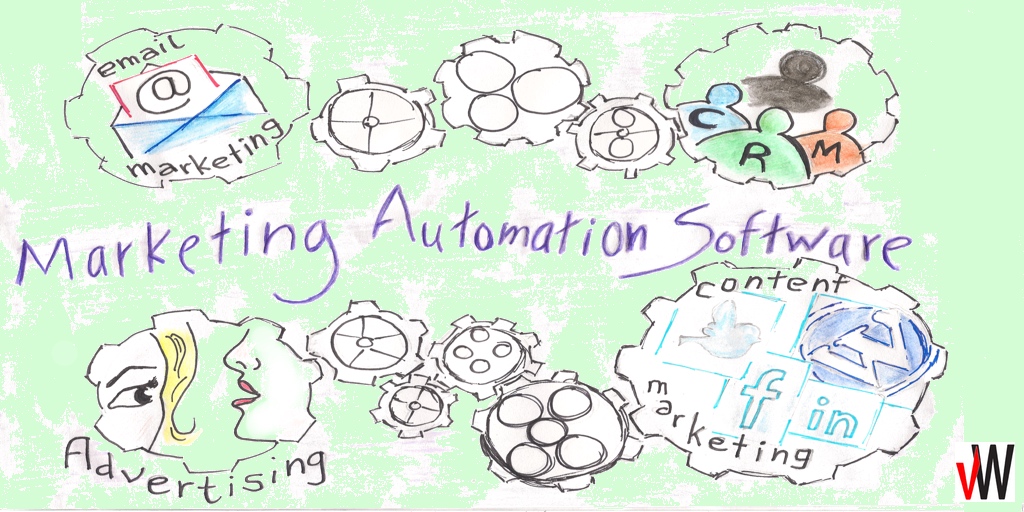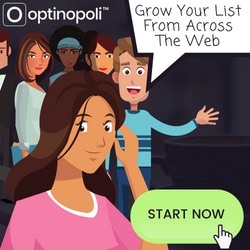This post aims to answer those questions. We review three main categories of marketing automation software, looking at how it actually helps your marketing and push up your profit levels. We also look at the top providers in each category.
Email Marketing Software
Use of email marketing software is one of the most basic usages of marketing automation. Such tools provide you with the ability to build up an email list. Basic functionality includes the ability to:
- Broadcast email messages to your list. For example, publish a regular email newsletter or ezine, promotional messages, general announcements and more.
- Create automated messages that go out in a set order after someone subscribes. You may for example have a sequence of emails that help explain the benefits of a product or service to the user over time.
Email marketing is absolutely intrinsic to marketing effectively online. In fact, it would be difficult to have a profitable online presence without the use of such software.
Regular messages build up the relationship and level of trust a small business has with its subscribers, and help educate subscribers about the product or service being sold. It often takes several such ‘touchpoints‘ from a business before the subscriber feels comfortable enough to make a purchase.
Many businesses give up communicating far too early. It’s not unusual for sales to occur some years after the subscriber originally joined the list.
For these reasons, automation software for email marketing purposes is a key sales and profits driver for small business.
Here are some of the main providers of such software:
Aweber.com
This company has been around for years, and was once one of the only such providers. Still going strong, it’s a popular choice for small business owners looking to automate their email marketing and build their list. It appeals particularly to newcomers to the online marketing environment.
MailChimp.com
MailChimp has been around since 2001, though was less noticeable than Aweber in the early years. It has since matured and experienced significant growth. In particular, after adding a free option for potential customers it grew 500% in just 12 months.
Infusionsoft.com
Infusionsoft combines both email marketing capabilities with offline, direct mail capabilities. For example, the ability to manage sequencing direct mail pieces within an overall campaign to individual prospects and customers.
It does however have a reputation for being complex to use with a steep learning curve. It is generally more suitable for established businesses who want to move their marketing up a gear or two, and have the resources to fully integrate it into their business.
Advertising Software
Advertising has been completely transformed by marketing automation software. Options include automated bidding, ad placement and retargeting. The main providers suitable for small businesses are Google Adwords and Facebook. There are of course many other options available.
Let’s take a look at the type of automation software these providers have available that make it easy for small businesses to advertise online in cost-effective way.
Automated Bidding
Automated bidding means users of the system generally set the maximum they want to pay. You usually pay per click or per thousand views of the ad (CPM).
The advertising software then automatically calculates the best placement of the ad up to the maximum bid amount. Other factors also determine what you pay such as ad relevancy. Your costs will be lower than your maximum bid when other advertisers have lower bids for their own ads, and if your ad has greater relevancy.
The relevancy of the ad is mostly determined by click-through rate (CTR). By testing different ads and ad placements, advertisers can reduce costs over time by:
- Incrementally improving their CTR
- Boosting their ad relevancy.
Automated Ad Placement
Automated ad placement means your ads are placed in the most suitable locations based on the targeting you’ve set for the ad.
For example, in Adwords you can target ads based on selected keywords or topics. The ads will then be automatically shown in places such as web pages, videos and apps that match your targeting.
Over time you can then optimize your ads and make them more cost effective. You do this by dropping or preventing ad placements where the ad is not delivering the required results. Doing this means your advertising is increasingly concentrated on placements where it performs most strongly.
In Facebook, you can effectively set their advertising system to auto-optimize the placement of the ad. By setting a conversion goal (such as a new lead or sale), the system uses the conversion data to build up a picture of who is most likely to respond positively to the ad. They can then place it accordingly to maximize your results.
The more conversion data it has to work with, the more cost effective your advertising will generally be.
In both systems therefore, this type of marketing automation software opens up the world of sophisticated advertising placement and customer targeting to small businesses. Reaching huge numbers of potential customers with cost-effective, highly-targeted ads has only previously been available to much larger companies with advertising departments and marketing budgets to match.
Retargeting
Retargeting allows you to display ads to people who have visited your website or specific pages on it, via other websites. So after someone has left your website and is browsing elsewhere, they will see adverts encouraging them to return to your site or presenting specific offers that may be of interest.
For Facebook, their retargeting option allows you to display ads and sponsored posts to the person concerned from directly within their newsfeed.
As marketing automation software, it allows businesses to continue to communicate with potential customers 24/7, even if they don’t have their email or other contact details. By reminding prospects of where they have visited, it can help bring them back to the site and capture additional sales that would otherwise have been lost.
It can also give the impression of scale, even for micro-businesses, when potential customers see the business advertising on much larger websites. This in itself promotes the trust and credibility of the business, and further boosts sales conversion rates.
Use of such software is again a powerful sales and profit driver for small business.
Content Marketing Software
Content marketing uses content in various forms to attract, engage and educate prospects for your business, and build trust to the point at which the prospect feels comfortable in doing business with you.
For these reasons, it is an extremely powerful marketing tool both for building traffic and converting prospects, and largely bypasses the natural resistance many prospects have built up towards sales pitches and traditional advertising.
Recent research has shown that over 70% of marketers are increasing what they invest in content marketing, and that trend is only likely to continue.
The challenge for small business is in both creating, managing and organizing the level of content required to get results.
For example, blog posts, social media updates, articles, videos, Slideshare presentations, podcasts, and so on.
While larger businesses often have content marketing departments to drive all this content forward, small businesses rarely have access to this type of resource or the investment required. This again is where marketing automation software can step in and fill the gap.
vWriter.com
This content marketing software helps businesses both create the content required and manage the whole process so that each piece of content is leveraged effectively.
It’s built on a content creation platform so blog posts, articles and social posts can be created by their team of writers, and then auto-published when ready though the software. For social posts, you can also choose for content to be auto-created from the original piece of content.
It helps manage the overall process automatically and can make it largely hands-free for small businesses to use. So, as just one example of how the system can be used, as soon your latest blog post is published:
- Social posts across multiple networks can be created and scheduled for publication
- An article version of the post can be created and distributed
- Other processes in the content marketing chain can be initiated such as creating a Slideshare presentation.
As marketing automation software, it’s the first of its kind for content marketing and helps small business owners create an efficient and ongoing sales funnel for their business. For more information as well as a free content marketing strategy for your business, click here.





